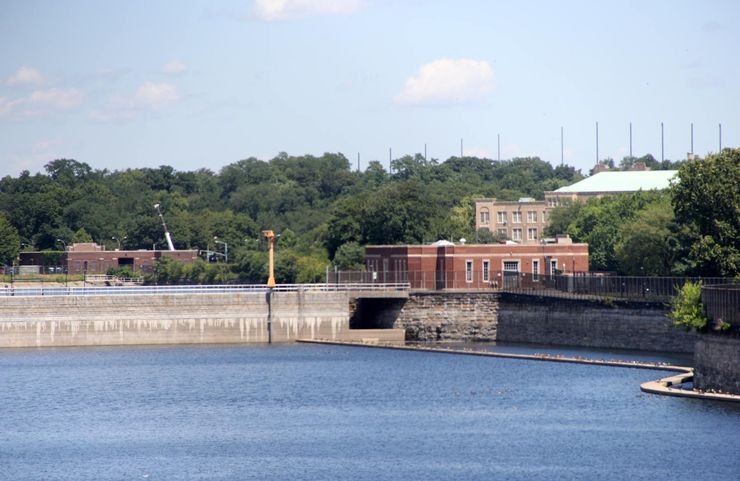
FOR IMMEDIATE RELEASE: 19-003
January 16, 2019
CONTACT:
deppressoffice@dep.nyc.gov, (718) 595-6600
DEPARTMENT OF ENVIRONMENTAL PROTECTION ANNOUNCES $15 MILLION UPGRADE OF JEROME PARK RESERVOIR FACILITIES IN THE BRONX
The New York City Department of Environmental Protection (DEP) today announced the start of a $15 million project to rehabilitate gatehouses, install new, lower fencing, and upgrade security infrastructure at Jerome Park Reservoir in the Bronx. Work on the project began late in 2018, will continue through 2021, and will help to ensure the long-term reliability of the City's Croton water supply system. The Reservoir will remain in active service throughout the duration of the work. Following this project, an additional multi-million dollar upgrade will improve the structural integrity of the walls of the Reservoir over approximately four years.
Much of the work during this project will focus on the gatehouses that control the flow of water into the reservoir, around the reservoir, and from the reservoir into the Croton Water Filtration Plant. The superstructures at Gatehouses No. 5 and No. 7, which contain aboveground infrastructure for reservoir operations and water quality monitoring, will receive a full rehabilitation. This includes roof upgrades, cleaning and repointing of the brick facades, replacement of louvers and doors, and reconstruction of the parapets to return them to their original condition. The brick superstructures of Gatehouses No. 2, No. 3 and No. 6 do not include any aboveground infrastructure that is used for water supply purposes, rather they contain access hatches to gates and other belowground infrastructure. Because these gatehouses serve no operational purpose and are beyond repair, they will be removed and the hatches will be rehabilitated as the source of permanent access for water supply operations at these locations along the Reservoir. The original limestone building identification plaques from the brick superstructures will be reinstalled on site.
Considerable work will also take place around the perimeter of Jerome Park Reservoir. A significant buildup of weeds and brush that obscured the public's view of the reservoir will be removed. A 10-foot-high chain link fence situated along the edge of the Reservoir will also be removed and replaced with a 4-foot-high fence. New guiderails will be installed along the roads that abut the reservoir. As part of continuing work to improve security throughout the entire water supply system, the project also includes the installation of new security cameras and traffic-control bollards at two of the gatehouses.
Jerome Park Reservoir was built from 1894-1905 to help distribute water to the Bronx and provide an additional source of water storage within the city. The two-basin reservoir covers 94 acres and has a storage capacity of 770 million gallons. Jerome Park Reservoir was originally fed by the Old Croton Aqueduct and New Croton Aqueduct until the former was taken offline in the 1950s. Today it continues to receive water from the Croton Water Supply System through the 33-mile-long New Croton Aqueduct. Jerome Park Reservoir and its infrastructure was significantly modified in the 2000s and early 2010s to connect the reservoir to the newly constructed Croton Water Filtration Plant, which was activated in 2015. On average, about 10 percent of New York City's drinking water passes through Jerome Park Reservoir and the Croton Water Filtration plant on a typical day.
DEP manages New York City's water supply, providing more than 1 billion gallons of high quality drinking water each day to more than 9.6 million residents, including 8.6 million in New York City. The water is delivered from a watershed that extends more than 125 miles from the city, comprising 19 reservoirs and three controlled lakes. Approximately 7,000 miles of water mains, tunnels and aqueducts bring water to homes and businesses throughout the five boroughs, and 7,500 miles of sewer lines and 96 pump stations take wastewater to 14 in-city treatment plants. DEP has nearly 6,000 employees, including almost 1,000 in the upstate watershed. In addition, DEP has a robust capital program, with a planned $19.4 billion in investments over the next 10 years that will create up to 3,000 construction-related jobs per year. For more information, visit nyc.gov/dep, like us on Facebook (facebook.com/nycwater), or follow us on Twitter (twitter.com/nycwater).

